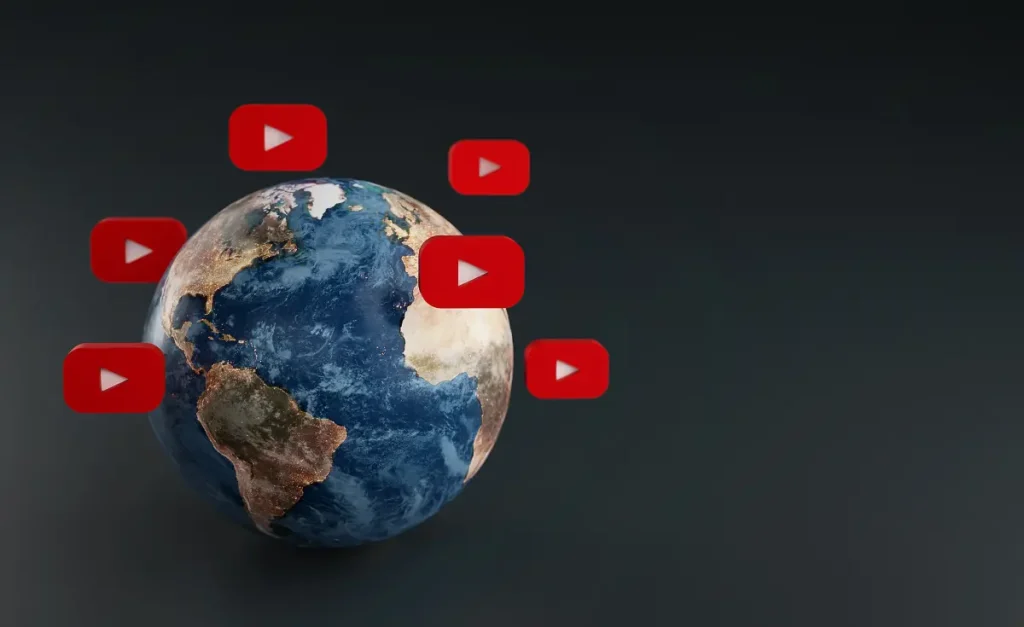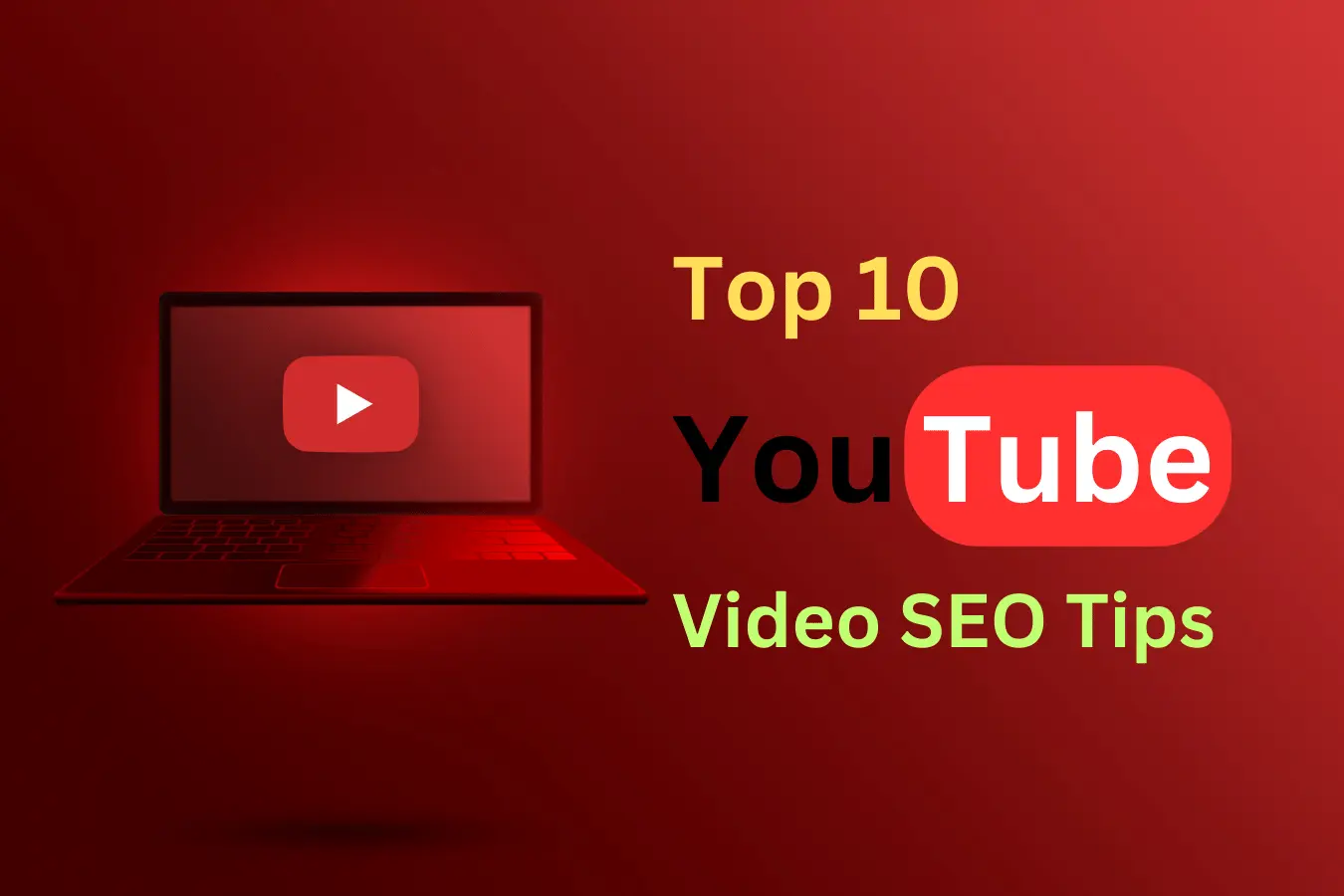When marketers want to reach new groups, YouTube is a great place to do it. It makes sense that you are going to make sure that as many people can see it as possible.
And YouTube SEO isn’t as hard as you might think. It’s likely that you already know how to improve your online presence for Google and other search engines. This is because the building blocks of YouTube SEO are very similar.
Let’s start with the basics of YouTube SEO and then move on to what you can do to get more people to watch your videos.
Table of Contents
What is called YouTube SEO?
Using search engine optimization (SEO) techniques, you can raise your videos’ and channel’s visibility in YouTube’s search results. In order to increase your site’s organic traffic and expose your content to more people, you need to employ a number of tactics.
How does YouTube SEO work for your channel?
Similar to Google’s search algorithm, YouTube considers various criteria to determine the higher ranking of videos. Some of these criteria are:
- Make sure your video titles and descriptions are clear and accurately describe the content. Titles and descriptions should contain pertinent keywords.
- You can organize your movies into different categories by applying tags, making them more discoverable for visitors looking for specific themes. To attract more people, use both broad and narrow tags.
- Details like the duration, upload date, and total views are all part of the video’s metadata. By utilizing this data, YouTube’s search algorithm can better understand your films and assign them appropriate rankings.
- How long viewers keep scrolling down the page is one of the main metrics used by YouTube’s ranking system. Your videos’ search engine rankings are directly proportional to the number of views they receive.
- You may boost your videos’ search engine rankings on YouTube by encouraging engagement with them through likes, comments, and shares.
What are the benefits of YouTube SEO?
You can reach a massive, and maybe entirely new, audience using YouTube SEO. Therefore, it may increase the number of high-quality visitors to your site.
In comparison to sponsored ads, YouTube SEO might yield a higher ROI.

Due to the advertiser’s financial investment, commercial films like the one below appear on YouTube.
A YouTube video featuring the search term “how you can drill into marble”
Displaying optimized movies in search results, however, does not cost anything (beyond the initial investment in their creation). Alternatively, you should put in the effort to create and optimize them until they appear in search results.
Creating cost-effective advertising requires a significant investment of time and effort. We allocate additional funds for advertising purposes.
Is it beneficial to optimize videos on YouTube?
If you want better ranks, more clicks, and conversions, optimize your videos for YouTube the same way you optimize your pages for Google. Improving your films’ optimization can help you get more views on YouTube and higher search engine rankings on Google.
If you want more people to see and interact with your films, Google suggests improving them. If your videos actively assist your potential consumers in solving their problems, you’ve already completed the majority of the work for optimizing your YT channel. Also, although it may not appear so at first glance, optimizing your films for YouTube is an important part of your inbound promotion plan.
Only a short time ago, inbound marketing through videos was revolutionary. As time progressed, marketers understood that creating copious amounts of low-quality content was insufficient; they needed to optimize their material for search engines to find it.
Previously, one could only find that information in written form. That was then; now it’s not. Alternatively, a full-fledged content strategy incorporates not just textual pieces like ebooks and blogs but also visual assets like films and podcasts. Search engine optimization is becoming more important as alternative content forms gain popularity.
Online video-sharing platforms, such as YouTube, are becoming more important for this. Do not fret if you are perplexed.
Top 10 tips for Youtube SEO
Discover the top tips for optimizing your YouTube videos. Check them out:
1. Research keywords:
When optimizing for YouTube and Google, keywords are king. They allow the platform to determine the video’s subject, index it, and link it to user queries.
To accomplish this, you’ll need to include them in specific areas when you upload the video clip. These fields include the title, tags, and description, among others.
The best way to promote your films and get more people to watch them is to choose keywords that both describe them and have search engine optimization potential.
In order to boost your films’ visibility, you might think of fresh, popular keywords on the platform.
Doing a benchmark is another part of keyword research. Your rivals can actually be a source of assistance.
To accomplish this, go to channels that are considered experts in your field. Having a large number of views and subscribers indicates that they are proficient in YouTube SEO and make appropriate use of keywords. Check out the most common videos to see what terms they use.
To accomplish this, navigate to the Videos page on their channels and select the option for organizing by the most watched videos.
Nonetheless, their visibility to users is limited. Find the “keywords” section in the video page’s source code (accessed via the right-click menu) and insert them into the video.
You can also examine data related to your channel. Look at the traffic source analysis to see which terms people are using to find your videos. Browse the site for suggestions on what to record next or how to include keywords in your uploads.
- The Keywords Everywhere SEO add-on is a free Chrome plugin that displays a monthly search volume estimate in the Google and YT search boxes.
- You can see search trends (you can limit it to YouTube searches if you want) and find out what others are talking about with the free Google tool called Google Trends.
- VidIQ is an add-on for Google Chrome that, for free, displays helpful information alongside YouTube videos.
2. Take potential keywords:
You have a solid set of keywords to work with, thanks to the advice up there. How then can you determine which ones are ideal for use in your films?
More people are drawn to the most popular phrases. But there’s greater competition, and it can be tough to compete with major brands and influencers. We call these terms “long tail,” and they’re definitely your best bet, particularly if you own a tiny firm.
While their traffic isn’t very impressive, they also have little competition. Therefore, getting a good job is less of a challenge. On top of that, they are generally indicative of searches close to the bottom of the sales funnel.
However, how can you identify long-tail keywords? They signify a more targeted search and are typically longer (three words or greater).
If you want to exclude competitors from your search, you may use the term “Instagram content marketing” to limit your results. By adding the phrase “content marketing Instagram Stories” to your search, you may narrow the results even more and improve your video’s placement prospects.
Regardless, you should only choose keywords that are relevant to the video’s content. Visualize directing people who type “content marketing Instagram Stories” to a video that offers advice on home décor.
Simply put, after a few seconds of watching your video, the consumer will click away. As a result, YouTube will deduct points from your rating based on how engaged your videos are. Doing so is like accidentally hurting yourself.
3. Attractive video title:
After conducting extensive keyword research, you should already have a solid list of terms. Then, how do they get used?
The title is one of the required fields to include the keyword. For YouTube’s indexing and ranking purposes, this is a crucial component.
Additionally, the title should closely align with the user’s search terms to optimize the video’s visibility.
Furthermore, Briggsby investigated potential platform ranking criteria by examining the relationship between video positions in YouTube search results. They learned that search engine rankings typically use a precise match of the keywords in the video title.
Longer names are less effective, according to the research, because the top positions are more objective. The top 20 players’ titles have an average of 47 to 48 characters, with a maximum of 100 characters.
Make an effort to use the exact term in your titles and keep them short. These results should be considered, but they are not laws. Always keep in mind that the title of your video can be the very first thing a user sees.
Therefore, it should not only inform viewers of what they are about to watch, but also inspire them to engage with your film. Thus, a pinch of imagination is worth it since it has the power to pique interest.
4. Add tags:
Any reputable Google SEO expert will tell you that stuffing meta tags with keywords has become a waste of time. The search engine decided to remove it as a ranking criteria due to its frequent use as spam.
On the other hand, tags are crucial for a video’s rating on YT. They are one of the things that YouTube takes into account when determining a video’s topic matter, indexing it accurately, and making related video recommendations.
YouTube limits you to 120 characters for this area. Use no more than 6 or 8 words; otherwise, you risk confusing the algorithm with irrelevant terminology.
5. A good description:
When uploading the video, it’s essential to complete the description field. The purpose of this text is to describe the video as accurately as possible.
If the title is short, the description can be longer and more thorough if the title has to be brief. This allows for up to five thousand characters.
There are two main reasons why the description is crucial for ranking purposes. Because the first part of the video shows up in the search results, it can be a persuasive tool to get the user to watch the whole thing, so it’s best to put the most important parts at the top.
With a captivating description, you can boost your video engagement and YouTube points. Additionally, the platform’s algorithm uses the description to identify the video material. Consequently, you need to use keywords that reflect the subjects discussed in the video here. This way, you increase your chances of ranking for certain terms. Within the text, use shortened links to encourage readers to take action, such as subscribing to the channel or downloading stuff from your website.
One last thing to consider is the use of timestamps to highlight important portions of the video, particularly longer pieces.
Hashtags are an additional feature that allows viewers to discover more videos related to a specific term by adding them to the text. Avoid overdoing it with hashtags in the description—YouTube blocks videos with more than fifteen.
6. Long videos:
Regarding the correlation between video length and ranking, the Briggsby study (discussed earlier) also found two things:
Low-quality videos (those under 2 minutes) often land in the bottom 5 spots, with an average duration of 11 minutes and 44 seconds. A ten-minute film is a good starting point, so it’s worth the investment.
They likely satisfy the needs of people seeking more comprehensive and detailed information. Videos that are under two minutes in length, on the other hand, are usually lacking in substance. But it bears repeating: quality, not duration, is what matters most in a video. If you put money into high-quality material, the video’s duration is less important.
7. Promotion:
You can boost your films’ exposure on YT only by tweaking their titles, descriptions, and tags. However, to promote your films and get more views, you need more than just YouTube. You need a variety of marketing outlets.

Here are a few pointers to help you out:
Include the videos in your related blog posts, create promotional videos and product demos to upload to your website, promote your videos through email marketing and signatures, share the videos on social media, use the videos as responses to user messages and comments, join groups, forums, and question-and-answer sites (like Quora), and respond to users with the videos.
Always keep “relevant” in mind when taking these steps. Place video recommendations where they will be most helpful to the user.
8. Customize Thumbneil:
When someone comes across your video listing, the thumbnail is the very first thing they see. It has the ability to influence whether people click on it or not.
Having high-quality thumbnails can have a significant impact on your video’s visibility in search results, both on YouTube and in other search engines.
Once your video has finished uploading, YouTube will automatically select an option for you to choose from. However, these still images from the video won’t do much to attract the attention of distracted viewers.
Additionally, you face the risk of your video gaining too much attention due to its widespread use. Once you authenticate your account, you can enhance the quality by creating and uploading your own thumbnails.
Use your imagination. Choose an image that enhances your video’s subject yet stands out. What it does to your outcomes is something you will adore.
9. Create Playlist:
The percentage of people who visit YouTube every day is close to 62%. An additional 37% of millennial adults often use the site to view videos in one sitting. Improving your YouTube SEO quotient is as simple as making it easier for people to binge-watch your content.
To make it easier for your viewers to discover and enjoy the high-quality video they were hoping to see on your channel, consider organizing your uploads into thematic playlists wherever it makes sense. To optimize your playlists, use clever keyword usage in video titles, descriptions, and embeds.
Make sure your playlist themes aren’t too general. For instance, stay away from “how-to” playlists that cover a wide range of topics (e.g., fitness, cuisine, and fashion) and may contain films that are completely unrelated to each other. A decent playlist should only include videos with a consistent theme.
10. Use logo:
While channel logos and thumbnails don’t have a direct impact on YouTube SEO, they are nonetheless quite beneficial. Having a strong visual identity is crucial for building a successful brand on YouTube and other online platforms.
To stand out in an ever-expanding sea of content or to fade into oblivion—that is the question that great channel artwork and intriguing logos can answer. When you use distinctive images, people are more likely to remember and return to your brand, which also helps with future visits.
Logos and other branded visuals really do convey a lot about your company in a single impression. Pick layouts, hues, and colors that complement your brand’s identity and help convey your desired message to the target demographic. Make sure they match the rest of your brand’s web assets.

Customize as many visual aspects as you can to make your YouTube channel stand out and attract more viewers. Add your own unique cover art, avatar, and in-content components, such as chapter markers and end cards.
Quality is also important. Making your own visual assets is fine if you have the technical skills. Otherwise, it might be good to hire a freelance designer who has the necessary expertise to achieve the desired effect.
Conclusion
After its parent corporation, Google, YouTube ranks as the world’s second-largest search engine. Every minute, YouTube uploads more than 500 hours of video, and the site continues to grow. YouTube videos account for eight out of ten video search results.
For this article, we have looked at some of the most fundamental concepts of search engine optimization (SEO) for YouTube in the hopes of helping your video rank higher.
FAQs
How does SEO work on YouTube?
Search engine optimization (SEO) for YouTube entails tweaking your channel’s landing page, playlists, descriptions, metadata, and videos. Video optimization is possible for both YouTube and other search engines.
How do I do SEO for YouTube for free?
SEO strategies for YouTube:
1. Put a keyword into the filename of your video.
2. The video title is a natural place to insert your keyword.
3. Make your video description more effective.
4. Use trending keywords that are relevant to your subject to tag your video.
5. Put your video in a category.
6. The result link for your video can have a thumbnail image that you upload.
How long does YouTube SEO take?
Google claims in a video that it usually takes 4-12 months for SEO to start showing results. Search engine optimization (SEO) often takes four months to a year before your company starts to see any results from the changes they recommend.
What is the full meaning of SEO on YouTube?
Search engine optimization, or SEO, is the process of enhancing your YouTube channel so that it appears higher in search engine results and reaches more people.



